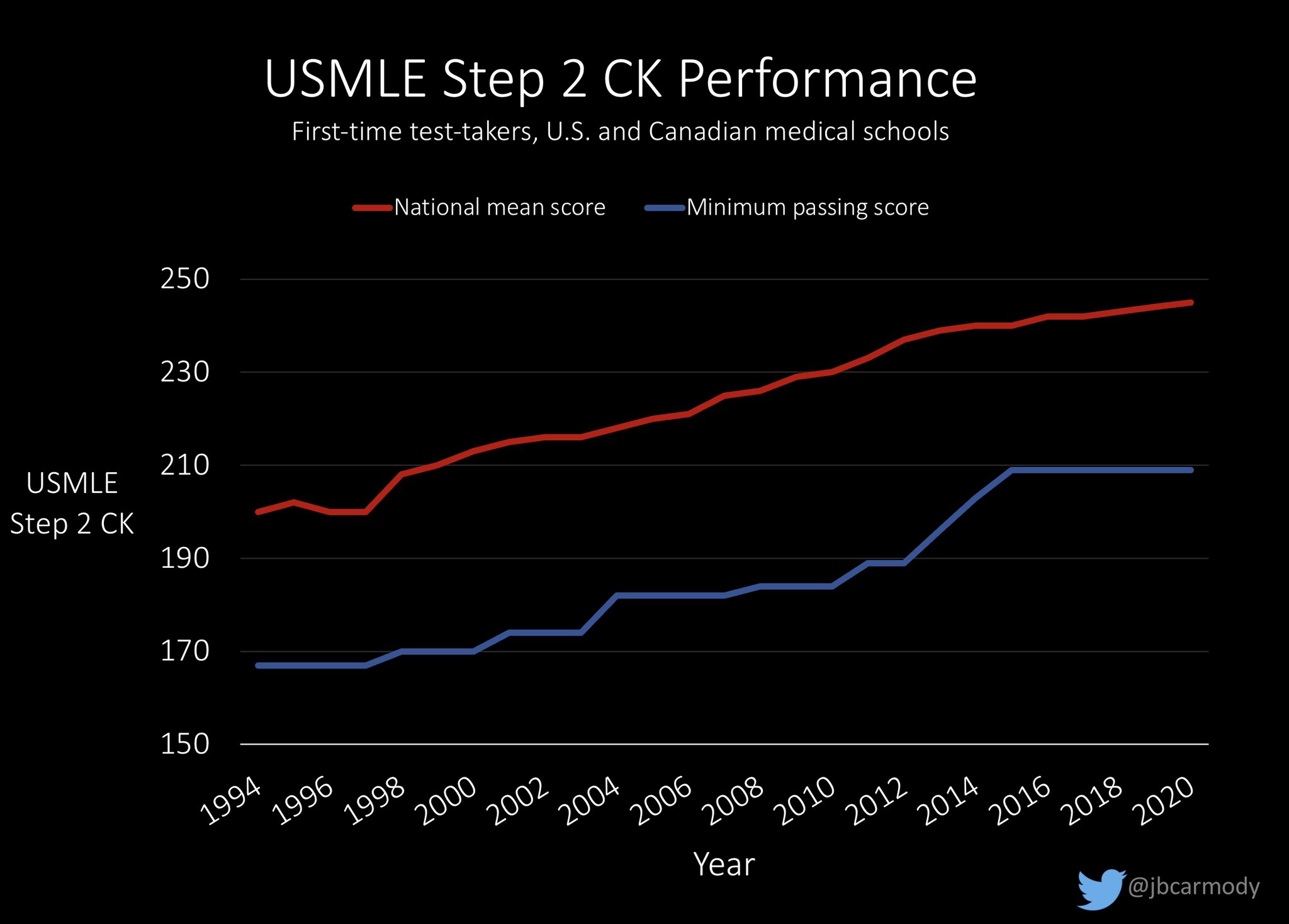What You Need to Know About the Passing Score Increase for Step 2 CK
- by
- Apr 18, 2022
- Reviewed by: Amy Rontal, MD

The USMLE Step 2 CK is intended to test your clinical knowledge—and that’s what “CK” actually stands for. When the test is graded, the percentage of questions you get right is curved to a three-digit score.
Currently, the threshold for passing Step 2 CK is a 209 with an average score for first-time test-takers last year of 246 and a standard deviation of 15. Starting July 1, 2022, however, the minimum passing score will increase by 5 points from 209 to 214.
What does this all mean for you? Let’s dig into it!
 Still looking for a Step 2 Qbank? Meet the new combined Step 2 & Shelf Exams Qbank with 5,000 practice questions that most closely match what you’ll see on your USMLE Step 2 and all of your shelf exams. Get started with 7-day FREE access!
Still looking for a Step 2 Qbank? Meet the new combined Step 2 & Shelf Exams Qbank with 5,000 practice questions that most closely match what you’ll see on your USMLE Step 2 and all of your shelf exams. Get started with 7-day FREE access!
How do I interpret Step 2 CK scores?
You may realize this new minimum passing score of 214 on Step 2 CK is 20 points higher than the historic passing score for the USMLE Step 1 of 194 before that exam changed to Pass/Fail. This disparity between the two test scores is not because Step 2 CK is necessarily more difficult, but rather because the curve used to generate the three-digit score is different.
Generally speaking, most test-takers performed better on Step 2 CK relative to Step 1—at least when the latter was associated with a numerical score.
Why are these changes happening?
The USMLE Management Committee is the governing body in charge of administering and scoring of the USMLE board exams. The Committee also oversees passing standards. Periodically, the Committee raises the threshold for passing each of the board examinations to reflect evolving expectations in the acquisition and application of medical knowledge.
The passing score for Step 2 CK has been 209 since 2014. Given that the passing score has historically increased every 2 to 3 years, it’s not surprising that the Committee decided to increase it again as of July 1.
What does this mean practically?
The curve used to generate your three-digit score from the percentage of questions you answer correctly will stay the same. Therefore, since the passing score will increase from 209 to 214, the upcoming change will make it harder to pass Step 2 CK. The change will also be occurring against the backdrop of Step 1 becoming a Pass/Fail exam earlier this year. Simply put, because of the increase in the passing score for Step 2 CK and the enhanced role this exam likely will play in residency applications, you will want to spend substantial time studying for it.
If you have the scheduling flexibility, you may want to consider timing your exam before July 1, the date the scoring change will take effect. Do so only if you are sure you’ll be able to devote enough time to prepare for achieving your goal score.
If you plan to take the test after July 1, you will want to adjust your target score on practice tests to make sure you are reliably within passing range. A good starting point would be to aim for a score of 220 (from a previous target of about 215 before this change was announced) or higher on at least 3 practice tests.
Simply put, because of the increase in the passing score for Step 2 CK and the enhanced role this exam likely will play in residency applications, you will want to spend substantial time studying for it.
Furthermore, if you plan to include Step 2 CK with your initial residency application materials, you should spend some time reviewing what the average scores have been for students who successfully matched into your desired specialty and should adjust your goal score accordingly.
How to study for Step 2 CK?
Ultimately, this change will have little effect on how you prepare for the exam. The backbone of preparation will still anchor on identifying and using a quality question bank and using textbooks and videos supplementally as needed. This change does mean you will have to work harder to make sure you will pass the exam on your first attempt.
The key is, of course, having a plan! This is where we remind you that Cram Fighter isn’t just for Step 1: you can use it to create a detailed study schedule for Step 2 that divides up the resources you want to use to review, tells you exactly what to do each day to stay on track, and is easy to edit and rebalance if you need to take a day off or move tasks around. Sign up for a free trial and create your schedule here.
Just put in the hours studying and give this test the attention it deserves—perhaps more attention than it has historically received—and you will succeed on this second milestone in your board exam journey. You can do it!
About the Author
Originally from the Kentucky suburbs of Cincinnati, OH, Mike finished his undergraduate degree at a small Kentucky liberal arts school called Thomas More University. From there, he attended medical school at the Perelman School of Medicine at the University of Pennsylvania in Philadelphia, PA, where he was involved in the Medical Student Government, Dermatology Interest Group, and University City community clinic. He completed a preliminary internship in Internal Medicine at Brigham and Women's Hospital in Boston, MA and is currently a dermatology resident in the Harvard combined program. Outside of medicine, Mike enjoys hiking, playing tennis, and just generally being outside. Though the Patriots and Eagles might have Super Bowl wins behind them, he will always be a Bengals fan at heart.










